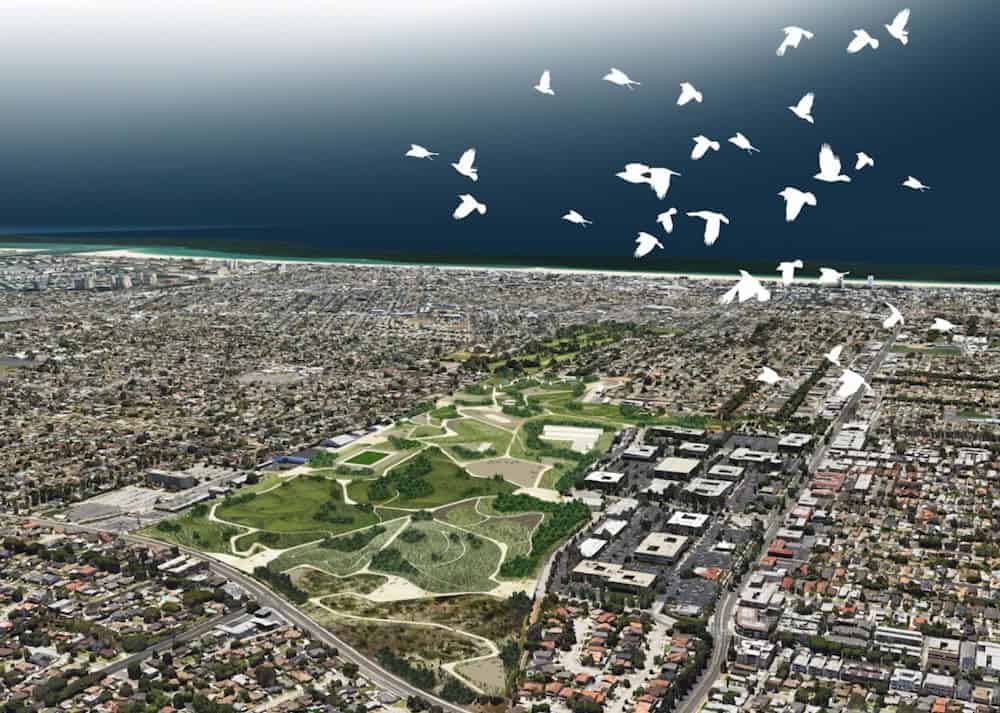By Alan Levenson
In 2014, Santa Monica voters overwhelmingly passed Measure LC to close the airport and build a park. The vision was bold and clear: replace jets, cement, and asphalt with recreational and green space for future generations. It wasn’t about housing or commercial development—it was about reclaiming public land for the public good.
Ten years later, some are using a narrowly worded clause in Measure LC to justify introducing housing. That clause wasn’t a mandate—it was a safeguard. It guaranteed that voters—not city hall—would decide if non-park uses were ever proposed. It did not say housing was part of the plan. And it certainly wasn’t why so many residents tabled, wrote, and knocked on doors to pass LC.
Now we’re hearing Santa Monica “can’t afford a park” without housing or commercial buildings. But the numbers tell a different story.
After the airport closes in 2028, the existing buildings on the land—about 30 to 40 acres—are projected to generate $20–22 million a year in rent. That money currently goes into the “airport fund” due to FAA rules. Once the airport closes, that same revenue can support park operations, maintenance, and even finance a $100 million revenue bond to remove the runway and build the park—without raising taxes.
Since 2015, the airport has quietly operated at a profit, thanks to the city ending sweetheart master leases that once let private companies sublease public land at a markup. That revenue is used to enrich a few. It can now serve the public.
Some argue we need housing to make the park “financially viable,” and others suggest the land should help meet our broader housing needs. While housing is a pressing issue citywide, putting it in the park brings higher costs, delays, and long-term tradeoffs. New construction requires major infrastructure investment, environmental review, and public subsidy. It could also delay the park or force the city to sell off public land to private developers. Housing should be distributed across the city—where services already exist and communities can be strengthened—instead of consuming the one large piece of public land we have left.
Let’s not repeat the mistake of 1926, when land purchased for a park was quietly overtaken by industrial aviation. Voters passed LC to win a park—not to create a loophole for housing and development.
The park is not only possible. It’s already paid for.
Let the City Council know—by phone, email, or public comment—that you support building the park Santa Monica was promised. This is our moment.
Alan Levenson
Santa Monica Resident and Founder of NoJets
Former LC Campaign Supporter












